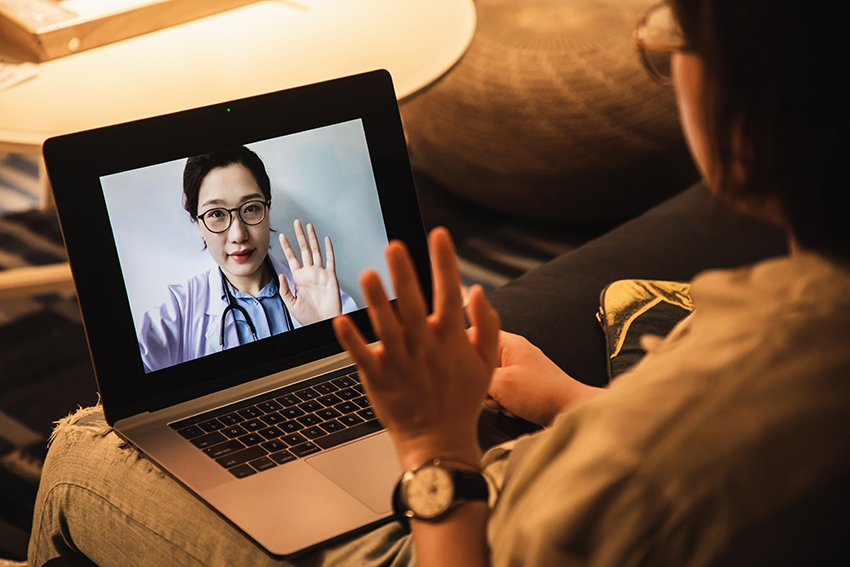
Photo Credit: Kilito Chan/Getty Images
Digital communications and media are now part of everyday life for many people around the world. But while people have turned to smartphones for entertainment, socializing and commerce, the health community is still working to make services, outreach and treatment digitally accessible. Examining successful applications allows us to understand what approaches might be possible for digital health services. During the COVID-19 pandemic, it is more crucial than ever that digital health resources provide support for people to access from their homes.
Reaching people where they are
In Asia, new digital health applications are showing promise. One area that has been eager to go online is HIV programming, because it is already heavily invested in outreach to at-risk groups. In the past decade, many at-risk groups have shifted from in-person gathering sites to online settings — such as dating apps and social media — for socializing and sex. For outreach strategists, bringing people into HIV testing facilities is always difficult. But, when people shift social activities online, it becomes even harder to reach them with services. The COVID-19 pandemic has exacerbated this.
FHI 360 designed the Online Reservation Application (ORA), a system now in 10 countries and expanding, that allows outreach workers and promotional campaigns to connect easily with people to schedule appointments and receive SMS reminders for visits to physical clinics. Successful arrivals are attributed to the worker or advertisement that connected them to the service. This data about which online method successfully brings in the most people is essential for programs to learn how to direct their promotions. Since 2017, the Linkages across the Continuum of HIV Services for Key Populations Affected by HIV (LINKAGES) project in Thailand, which created the ORA system, has seen 19,700 people make appointments, about 60 percent of whom successfully arrived. Early data shows that Facebook reaches the broadest audiences, while ads on dating apps yield fewer successful booking arrivals but lead to more positive case diagnoses.
Although this approach of “landing” people into services — sometimes called online-to-offline or O2O — has strong promise for other types of programming, the concept does not apply equally to all health efforts. For example, FHI 360 has discussed the ORA approach with tuberculosis (TB) program teams. But, audiences for TB programs are often those who live in cramped living conditions, are prisoners and other disadvantaged groups, or have minimal access to the internet. Therefore, outreach workers would need to make reservations on behalf of clients, which is less than the fully online approach. Programs for noncommunicable diseases, a rising priority in Asia, fall somewhere between the two extremes and may benefit from this approach.
The power of peer support
To better reach patients with multidrug-resistant TB, the Control and Prevention of Tuberculosis (CAP-TB) project in China turned to social media. The project created 57 Zone, a support network on the country’s widely used social media app, QQ, after realizing that connecting peers in this platform could provide increased support to existing medical guidance. More than 4,000 patients from 12 provinces in China now get support, advice and confidence from a growing team of “expert patients,” as well as weekly online consultations with counselors.
Health programs should consider investing in this approach because less credible social media spaces may develop on their own, and misinformation can spread in the absence of professionals. Yet, building a health resource tool on a for-profit social media platform raises serious concerns. Can we trust social media corporations — some of which have been known to leverage private information in irresponsible ways — as platforms for patients to post sensitive information? 57 Zone is careful to guard patient privacy, but this issue must be revisited every time social media is harnessed for digital health.
Where the Rx is
Private pharmacists are a potential, valuable resource for new health services for large populations. The SwipeRX application was created by Singapore-based mClinica, a partner to FHI 360 in efforts to leverage pharmacists in scaling HIV services. mClinica is a flexible social media platform that has connected a community of more than 150,000 pharmacists throughout Southeast Asia, providing them with professional development, case referral, drug reaction reporting functions and more. Its networks can also serve research and survey efforts, giving programs a promising way to hone strategies.
The platform is thriving. Pharmacists are reaching approximately 8 million patients per month, illustrating the magnifying power that SwipeRX can have in disseminating programmatic knowledge or assisting in a technical approach.
With the onset of the COVID-19 pandemic, online services have risen from welcome innovation to critical linchpin, as lockdowns and social distancing block traditional service methods and digital tools fill the gap. For example, FHI 360 has seen its ORA reservations skyrocket as programs shift to more online outreach. While many people may yearn for a return to in-person interaction, there is no doubt that lives will be saved by the ability to maintain health services online during times of viral outbreak.
